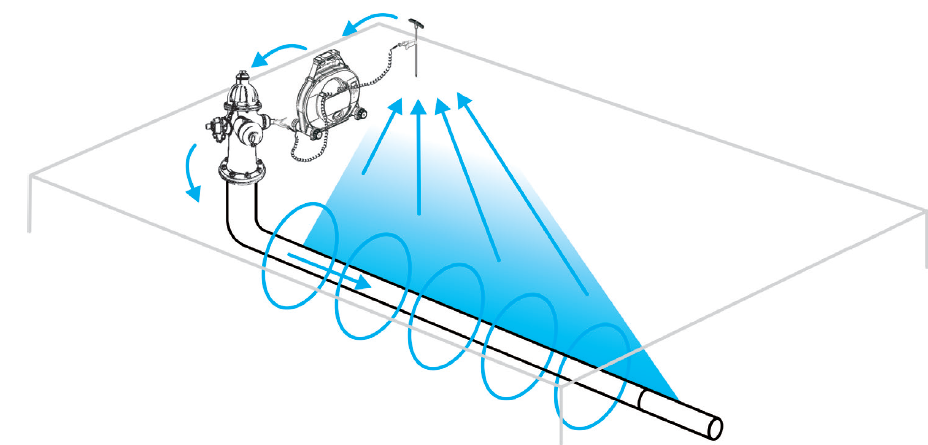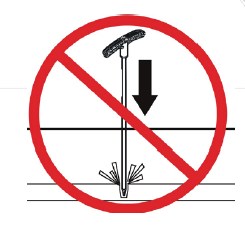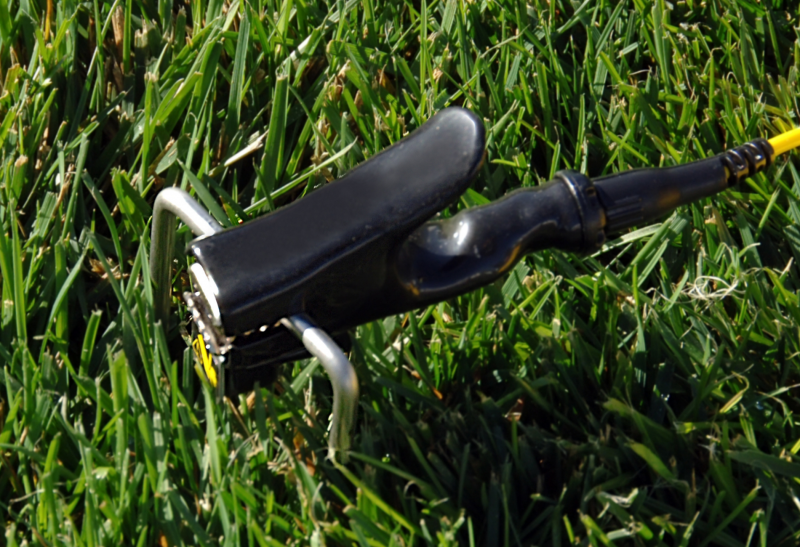Grounding: Completing The Circuit
On Grounding
What is the one thing you can do to improve the ease and accuracy of your locate? Improving the grounding of your transmitter is usually at the top of the list. A complete circuit occurs when electric current flows from the transmitter, down the target conductor, and then back through the sorrounding dirt to the transmitter. Electrical current cannot flow if it cannot return to its source. Making this last connection effective dramatically helps to lower the resistance of the entire circuit, and allows more current to flow.
The ground provides the connection from the dirt to the transmitter. Without a good ground it is difficult to have a strong circuit, and therefore difficult to create a strong, traceable signal on the cable or pipe.

The circuit travels from the transmitter, down the line, and back through the dirt. To complete the circuit to it needs to go to the ground.
Grounding Essentials
To set up a ground, you can use the grounding stake that comes with your transmitter. Plant the stake deep to increase the chance of reaching moist soil and to expose more of the metal stake to the dirt. Keep in mind that it is important to take precautions not to hit a buried conductor with your ground stake. One way you can do this is to perform a passive locate with your receiver to check for any unknown conductors that might be nearby.

If necessary, longer, wider ground stakes can be used as well as shovels and other digging tools. A long screwdriver may be handy if you have nothing else.
Grounding in Different Soils
Moist, heavy clay soil is highly conductive and typically provides an excellent return path for the current. Plants need water and have root systems that can offer a deeper reach to moister soil.
Dry sandy soil provides more of a challenge. In dry, sandy soil the resistance to current flow causes a weaker locatable signal. Water can be added to very dry soil to improve the grounding and lower resistance. Keep a mixture of water and a drink high in salts in your vehicle for this purpose.
Extending the Ground
A common theory in ground rod placement is that the ground rod should be placed at a 90 degree angle to the target utility and as far away as possible. In the congestion of the real world this is not usually practical. When attaching to a ground or placing a ground spike, care should be taken to not cross over other utilities. If another utility becomes a return path for the current, the resulting signal can compromise the accuracy of the locate on the target utility.
If you need to, you can look for other grounding opportunities. Metal road signs or telephone pole stabilizers can offer a good ground. (Be careful when using buried metal fence posts as this can then illuminate the whole fence if it too is metal and cause distortion if you are locating nearby.)
Things to Remember
- A good ground is essential to creating a good circuit.
- Factors that affect the transmitter’s ground:
- Type of soil
- Moisture content of soil
- Size and depth of ground stake
- The more current that is flowing on the conductor, the greater potential for increased signal strength for the receiver to trace
- Good grounding on both ends of the target utility is especially important when energizing the utility via inductance
- You can improve your circuit (and therefore the signal on the target utility) by repositioning the ground and, if locating in dry soil, by adding water to improve conductivity


